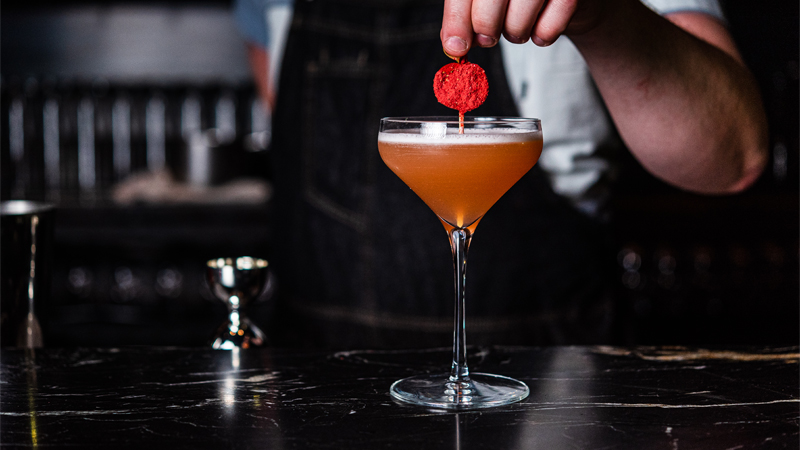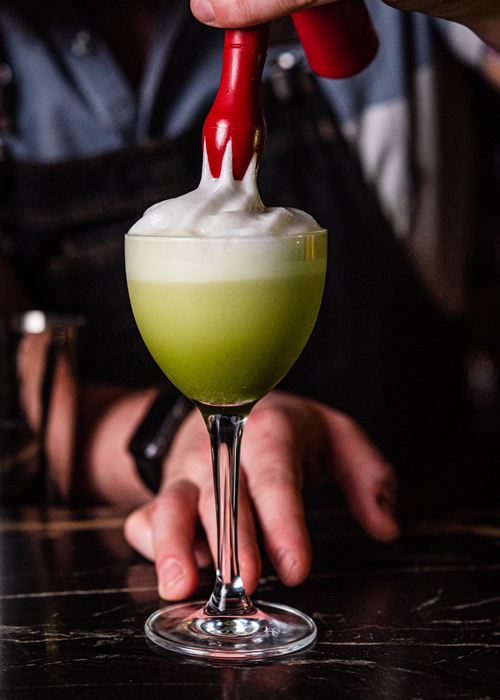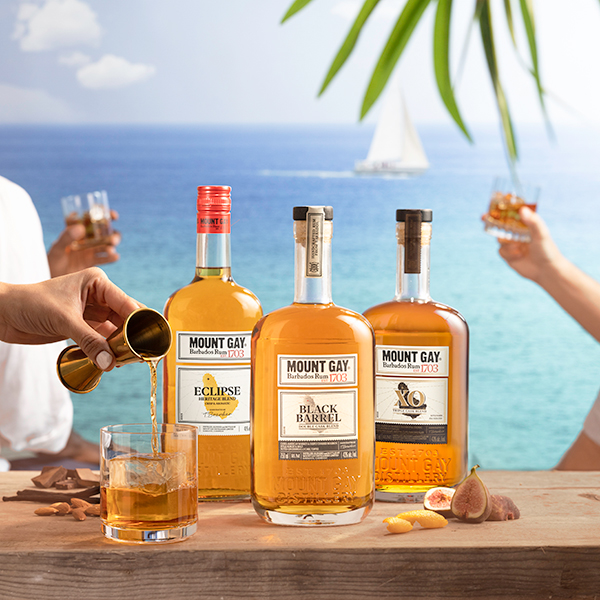Having house-made bitters and tinctures and syrups is nothing new. A novelty at the start of the cocktail revival 15 or 20 years ago, it soon became commonplace and continued spreading further until it became a universal standard. In a quest to reduce waste at the bar, as well as highlight in-house efforts and even streamline service, though, certain pioneering bars are taking the concept to the next level. They’re doing this by developing multi-purpose ingredients that can be used in myriad ways across an entire beverage menu, rather than stocking dozens of one-and-done creations.
House-Made Ingredients for a House Style
When Washington, D.C.’s Dram & Grain moved from its basement confines in Jack Rose Dining Saloon to more spacious digs in newly opened The Imperial, the team wanted to make a splash with an expansive menu. Andy Bixby, who’s been behind the bar at Dram & Grain since 2014 and is now the creative director of beverage at the aforementioned establishments, wanted to highlight some of the innovative work for which the bar has long been known.
“Cocktail bars are already expected to make the supporting characters for a cocktail; why not also attempt to make the stars of the show as well?” Bixby says. “I think it helps us to move outside of the normal box that we think in. We can start to be inspired by how these new ingredients work across a myriad of spirits, in a way syrups, sodas, and tinctures can only come close to achieving, allowing combinations to make all different types of cocktails.”
The result for Dram & Grain’s inaugural menu was a lineup of three house ingredients served in a diverse selection of three drinks apiece. The new house staples include what Bixby has dubbed Baked Citrus Amaro, including Contratto Aperitif, Don Ciccio & Figli‘s Cinque Aperitivo, and Fernet-Vallet; Tamaro, a savory digestif including tamari, dark miso, shoyu, lemongrass, and ginger; and Anisette, a blend of singular infusions including fennel, star anise, pine nuts, and almonds.

Producing versatile ingredients in house also enables fine-tuned control over flavor profile and overall quality. “We like to know what is going into our product, rather than buying, and then we are also able to tweak the flavor profile to our cocktail’s needs,” says Amy Racine, beverage director for The Times Square EDITION.
For instance, the team makes poached pears that then get turned into poached pear syrup, and further used to create an in-house poached pear vodka, with the resulting ingredients then showing up in multiple drinks, such as a Pear Punch for two, and the Pear Chi-Chi cocktail.
High-end bar programs are constantly doing this type of work, but often end up with only a single way to showcase each creation. “We already spend a ton of time coming up with these singularly pointed syrups and tinctures that we normally are producing to achieve a very specific goal, for a specific cocktail, and that’s great,” Bixby says. “Cross-utilizing them on our menu truly shows the diversity of each ingredient and how they can star in different styles of cocktails.”
Getting more use out of a star-worthy house ingredient can even help prevent occasional customer disappointment. “What happens when that drink you make for a guest is a product of months of work only to have them say, ‘That was awesome! Can I have something else like it?’ — your gut drops a little because that was supposed to be the drink that nailed it for them, and you are left trying to MacGyver something with the rest of your ingredients,” Bixby says.

While Dram & Grain has always prioritized making its own ingredients, including some wildly wacky ones over the years — alligator butter, anyone? — Bixby says for the new program he was inspired in part by the latest efforts from Ryan Chetiyawardana at Lyanness. The bar, a revamped offering of the space formerly known as Dandelyan, showcases seven signature ingredients.
Those signatures come with names such as Infinite Banana and Peach Emoji, and serve as the focal point of the menu rather than individual cocktails, with each of them coming available in three different drinks. They’re all described in detail in terms of flavor profile and are offered in small tasters so that guests can see what they taste like on their own. The team is also willing to find a way to finagle them into a custom riff on a classic.
Waste Reduction
Waste-free and low-waste bars have risen in prominence as of late, spurred on by bars such as Chetiyawardana’s since-closed White Lyan, and movements such as Trash Tiki. White Lyan’s policy was to use no ice and no fresh citrus, while Trash Tiki started as an online sustainability resource, grew into a series of pop-up events, and has further evolved into the more expansive The Trash Collective, including consultancy work.
With sustainability a top-of-mind issue across many restaurants and bars, using a bespoke ingredient in multiple ways is both logical and personal. While a house bitters may be shelf-stable and can last for an extended period of time, many others will be constantly dumped and remade while being used in paltry fashion for a single drink.

At The Times Square EDITION’s numerous restaurants, Racine can create and capitalize on creative energy between the kitchen and the bar team as well. “To the point, if we already carry the ingredients because they are used in dishes, we’d like to save the bottles, shipping, and energy it takes to purchase a product, and use our own resources,” she says.
“We are really making an effort to be responsible in the community and produce as little waste as possible,” Racine says. “The benefits are less about us and more about the community and being a good neighbor. Altogether it’s control of what is used, knowledge about what we are giving our guests and comfort with the imprint we leave.”
This story is a part of VP Pro, our free content platform and newsletter for the drinks industry, covering wine, beer, and liquor — and beyond. Sign up for VP Pro now!

